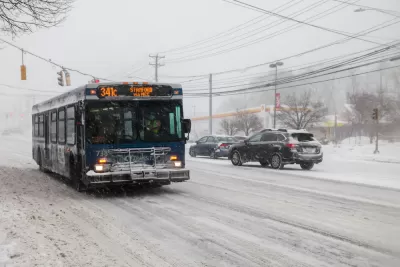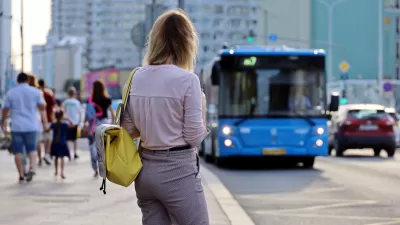State officials say federal requirements forced the end of a twelve-month pilot program, and that the state doesn’t have the funding to continue providing free fares with the end of federal assistance.

“After a year of free rides, CTtransit and other public transit buses ended a yearlong fare-free transit program originally introduced to expedite boarding during the COVID pandemic and help residents financially during tough economic times.” Writing for Connecticut Public Radio, Chris Polansky investigates the reasons why.
According to the state’s governor, “the federal government forced the popular program to expire” by mandating an equity study before free fares can resume. A spokesperson for the Federal Transit Administration (FTA) said “Setting fares is a local – and in this case, state – decision,” but that the equity analysis, a “routine activity,” is indeed required to continue a fare-free program past twelve months.
The article details the back-and-forth between state DOT officials, the governor’s office, and state lawmakers. While lawmakers say a fare-free program isn’t possible without federal dollars and would lead to service reductions, “advocates for free transit service point to a projected better-than-$200 million surplus in the state’s Special Transportation Fund they believe could be used to cover that cost and keep the program rolling.”
Christine Cohen, D-Guilford, chair of the Senate Transportation Committee, said “funding the program would create a ‘significant hole’ in the STF [Special Transportation Fund], leaving it in the red a few years from now.” Governor Lamont’s office says it “remains committed to working with all stakeholders to increase service and ridership in a way that is accessible and fair to all.”
FULL STORY: Free fares are over for CT bus riders. Who's to blame?

Alabama: Trump Terminates Settlements for Black Communities Harmed By Raw Sewage
Trump deemed the landmark civil rights agreement “illegal DEI and environmental justice policy.”

Planetizen Federal Action Tracker
A weekly monitor of how Trump’s orders and actions are impacting planners and planning in America.

The 120 Year Old Tiny Home Villages That Sheltered San Francisco’s Earthquake Refugees
More than a century ago, San Francisco mobilized to house thousands of residents displaced by the 1906 earthquake. Could their strategy offer a model for the present?

In Both Crashes and Crime, Public Transportation is Far Safer than Driving
Contrary to popular assumptions, public transportation has far lower crash and crime rates than automobile travel. For safer communities, improve and encourage transit travel.

Report: Zoning Reforms Should Complement Nashville’s Ambitious Transit Plan
Without reform, restrictive zoning codes will limit the impact of the city’s planned transit expansion and could exclude some of the residents who depend on transit the most.

Judge Orders Release of Frozen IRA, IIJA Funding
The decision is a victory for environmental groups who charged that freezing funds for critical infrastructure and disaster response programs caused “real and irreparable harm” to communities.
Urban Design for Planners 1: Software Tools
This six-course series explores essential urban design concepts using open source software and equips planners with the tools they need to participate fully in the urban design process.
Planning for Universal Design
Learn the tools for implementing Universal Design in planning regulations.
Jessamine County Fiscal Court
Caltrans
Institute for Housing and Urban Development Studies (IHS)
City of Grandview
Harvard GSD Executive Education
Toledo-Lucas County Plan Commissions
Salt Lake City
NYU Wagner Graduate School of Public Service





























